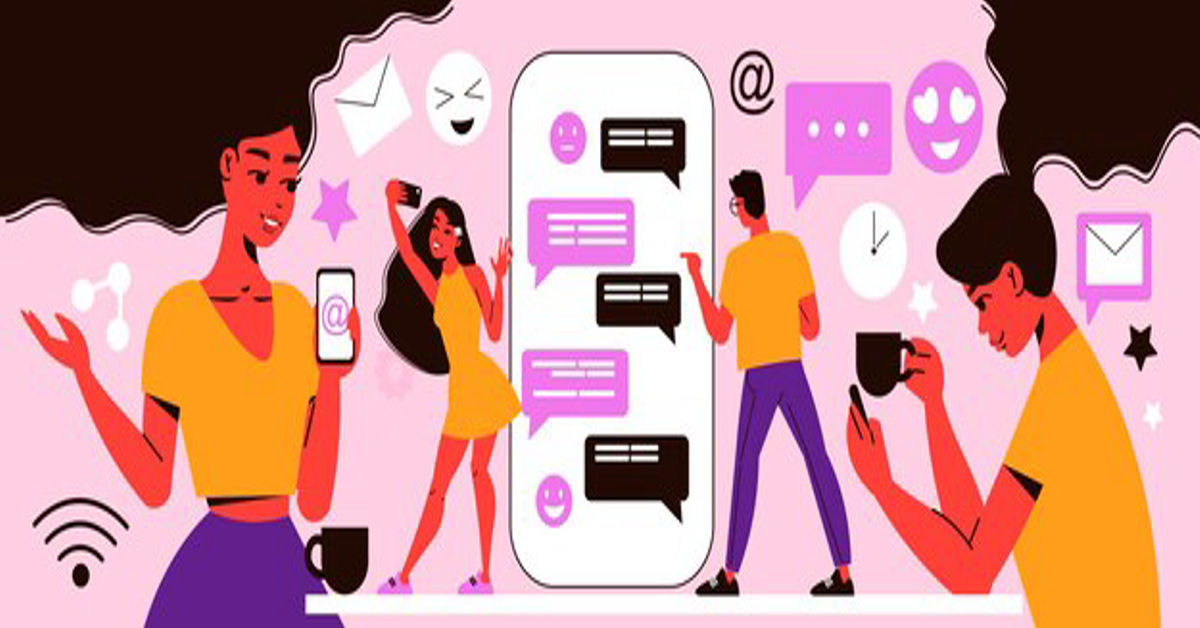In Inside Out 2, Pixar once again proves its mastery of storytelling with a single, blink-and-you-miss-it moment—the “glued to phone” scene. At first glance, it plays like a lighthearted jab at teenage screen habits. But beneath the surface lies something far deeper: a subtle, heartbreaking glimpse into how adolescents often seek refuge in technology to escape emotional overload. The scene doesn’t preach or overexplain—it simply shows a teen frozen in place, eyes locked on a phone screen, while a storm of inner chaos brews silently behind the animation. It’s visual storytelling at its finest, delivering a truth that resonates across generations in a matter of seconds.
What makes this moment so powerful is its emotional honesty. In a world where mental health challenges among youth are increasingly urgent, the scene hits a nerve. It reflects how smartphones, often criticized for disconnecting people, can also serve as lifelines—spaces where teens can momentarily tune out the noise of growing pains, anxiety, and societal pressure. Pixar has taken a modern reality and distilled it into a quiet yet striking image that speaks volumes without uttering a word. For parents, educators, and therapists, it’s not just a moment in a film—it’s a conversation starter, a mirror, and a call to connect more meaningfully beyond the screen.
The Evolution of Inside Out: Beyond Core Memories
The original Inside Out explored the emotional development of an 11-year-old girl, Riley, by introducing core emotions like Joy, Sadness, Anger, Disgust, and Fear. Inside Out 2 builds upon that foundation by addressing more mature emotional challenges. This sequel doesn’t shy away from complexity. It integrates themes such as social pressure, anxiety, and the rapid cognitive changes in teenage years. The character dynamics evolve as new emotions enter the stage, reflecting the layered inner world of adolescents growing up in a digital age.
Inside Out 2’s Message on Digital Dependency
What makes the “glued to phone” moment so compelling is its subtlety. It shows a teen character disassociating from reality and retreating into their phone during an emotionally charged situation. This isn’t framed as a judgment but rather an observation of a coping mechanism that has become increasingly normalized. Technology, in this case, acts as both a shield and a prison. The film’s creators intentionally place this scene at a pivotal emotional juncture to highlight the internal conflict young people often experience.
The “Glued to Phone” Scene Explained
In the scene, the character becomes visibly overwhelmed and instinctively reaches for their phone. Their posture, eyes, and breathing reflect a shift: from emotional engagement to digital escape. The background dims slightly, symbolizing withdrawal. The scene lasts mere seconds but leaves a lasting impression. It’s a cinematic representation of emotional withdrawal that mirrors real-life behaviors. This kind of visual storytelling is what makes Pixar’s work both impactful and relatable.
Emotional Disassociation in the Digital Age
Disassociation is a psychological response where individuals detach from their surroundings or emotions. With smartphones readily available, digital engagement becomes a convenient route to detach. For adolescents, whose brains are still developing emotional regulation, the phone becomes an easy tool for escape. Inside Out 2’s depiction of this behavior isn’t exaggerated. It’s grounded in how real teens behave during emotionally intense moments, reinforcing how modern disassociation often involves screen time.
Teens and Tech: A Complex Relationship
Today’s teenagers are digital natives. From school assignments to social interactions, much of their lives unfold online. This constant digital engagement affects not just their attention spans but also how they experience and process emotions. Inside Out 2 touches on this complexity without vilifying technology. Instead, it explores how screens provide comfort, control, and predictability in a world that often feels overwhelming. The “glued to phone” moment encapsulates this emotional safety net in action.
Anxiety and the Digital Coping Mechanism
Adolescence is a period marked by identity exploration, hormonal shifts, and rising anxiety. According to child psychologists, smartphones often serve as coping tools to manage anxiety. The character in Inside Out 2 doesn’t verbalize their discomfort. Instead, they reach for their phone—a nonverbal expression of seeking relief. The film suggests that the behavior isn’t inherently bad but highlights the importance of understanding the motivation behind it. It opens up conversations on anxiety and emotional support for youth.
The Role of Smartphones in Identity Formation
Teens use technology not just to escape but also to explore who they are. Social media, online forums, and digital communities provide platforms for self-expression and validation. Inside Out 2 subtly reflects this reality. The character’s reliance on their phone is tied to both internal conflict and social navigation. It portrays a teenager trying to manage both identity and emotion in an increasingly connected yet isolating digital landscape.
Emotional Overload and the Urge to Escape
Modern teens are exposed to more stimuli than ever before. Between school, social media, and extracurricular activities, their emotional bandwidth is constantly challenged. Emotional overload often leads to withdrawal, and for many, this takes the form of disappearing into a digital space. Inside Out 2 visualizes this with depth. The “glued to phone” scene demonstrates how emotional saturation can drive youth to find solace in devices that require no emotional reciprocation.
How Pixar Brings Real-World Issues to Animation
Pixar has a long-standing tradition of addressing deep emotional themes through animation. Inside Out 2 continues this legacy by tackling digital dependence without moralizing. The storytelling is observational rather than prescriptive. Instead of condemning screen time, the film illustrates its emotional function in a way that audiences of all ages can understand. It invites empathy and reflection, not judgment.
Responses from Parents and Educators
The reaction to this particular scene has been overwhelmingly positive among adults. Parents recognize the behavior in their own children. Educators see it in classrooms. The scene has sparked discussions on how to balance digital time with emotional development. Some schools have even used the film as a teaching tool to open dialogue about technology use and emotional intelligence.
Mental Health Professionals Weigh In
Mental health experts appreciate the nuanced representation of emotional avoidance. Rather than portraying technology as inherently harmful, Inside Out 2 shows how it becomes a tool for managing emotional difficulty. Psychologists suggest that scenes like this can serve as conversation starters in therapy or family settings. The key takeaway isn’t to ban technology but to understand what drives the need for digital escape.
Digital Escapism vs. Emotional Expression
Escapism isn’t new. Books, music, and television have all served as emotional retreats. What’s different now is the portability and constant accessibility of digital escape through phones. Inside Out 2 captures this evolution. The film makes a quiet but powerful argument: escapism is human, but understanding its cause is essential. Emotional expression and connection should not be replaced by digital silence.
What the Scene Means for Kids Watching
For younger viewers, the scene offers recognition. Many kids see their own habits reflected on screen. It helps them name and understand their behaviors. For others, it validates their emotional struggles. Inside Out 2 Glued to Phone doesn’t offer easy answers. Instead, it provides a framework to understand emotional responses, helping children become more self-aware and emotionally literate.
Final Thoughts: A Mirror to Modern Youth
The “glued to phone” scene in Inside Out 2 is more than a moment. It’s a mirror reflecting how digital life intersects with emotional development. Pixar has taken a bold step by portraying this with empathy and nuance. The scene resonates because it’s real. It acknowledges the internal chaos of adolescence and how screens become both saviors and saboteurs. For parents, educators, and young people alike, this is a reminder to look beyond the screen and into the emotion driving its use.
Emotional Themes Explored in Inside Out 2
| Theme | Description |
| Anxiety | Depicted through new emotion characters |
| Peer Pressure | Illustrated in social scenarios |
| Digital Escapism | Seen in the “glued to phone” scene |
| Identity Formation | Shown through character’s inner dialogue |
| Emotional Regulation | Explored through emotional conflicts |
Common Signs of Digital Disassociation in Youth
| Behavior | Explanation |
| Withdrawal from social settings | Avoiding interaction in favor of phone |
| Flat affect | Lack of emotional expression while online |
| Delayed responses | Zoned out during conversations |
| Eye strain and fatigue | Signs of excessive screen use |
Healthy Tech Habits for Teens
| Habit | Benefit |
| Screen time limits | Reduces digital fatigue |
| Device-free meals | Encourages family interaction |
| Scheduled offline activities | Promotes emotional grounding |
| Tech-free bedtime routines | Improves sleep and mental clarity |
Comparison of Inside Out (2015) and Inside Out 2 (2025)
| Feature | Inside Out (2015) | Inside Out 2 (2025) |
| Main Character | Riley (age 11) | Riley (now 13) |
| Setting | Childhood and family transition | Teenage years and emotional complexity |
| New Emotions Introduced | Core 5: Joy, Sadness, Anger, Fear, Disgust | Additional emotions: Anxiety, Envy, Embarrassment, Ennui, and Nostalgia |
| Core Theme | Emotional growth during childhood | Navigating adolescence and identity crisis |
| Emotional Focus | Balance between Joy and Sadness | Coping with stress, social pressure, and self-image |
| Visual Style | Bright, imaginative mindscapes | More layered, abstract representations of emotional development |
| Target Audience | Children and families | Tweens, teens, and families |
| Key Message | All emotions serve a purpose | It’s okay to feel overwhelmed—maturity comes from understanding complex emotions |
| Tone | Light-hearted with emotional depth | More introspective, still humorous but tackles deeper issues |
| Cultural Impact | Helped normalize emotional literacy in kids | Encourages mental health dialogue for digital-native teens |
Conclusion
As young people increasingly grow up in a world saturated with digital influences—social media, cyberbullying, comparison culture, and constant connectivity—the need for emotional literacy has never been more urgent. Inside Out 2 Glued to Phone builds on the foundation of its predecessor by expanding the emotional palette to reflect the nuanced experiences of adolescence.
By introducing new emotions like Anxiety and Ennui, the film reflects how today’s youth navigate identity, stress, and performance in an always-on culture. The storyline doesn’t just entertain—it functions as a psychological mirror, offering young viewers a safe way to explore Inside Out 2 Glued to Phone feelings they might not yet have the language to express.
FAQs
Q1: What is the main difference between Inside Out and Inside Out 2?
A: Inside Out focuses on childhood emotions, while Inside Out 2 explores the complex emotions of adolescence, such as Anxiety and Envy.
Q2: Are the original emotions still present in the sequel?
A: Yes. Joy, Sadness, Anger, Fear, and Disgust return but now interact with new emotions that reflect Riley’s teenage mindset.
Q3: Is Inside Out 2 appropriate for younger children?
A: While still family-friendly, Inside Out 2 addresses more mature emotional themes, making it especially resonant for tweens and teens.
Q4: How does Inside Out 2 address modern issues like social media?
A: While not always explicit, the film metaphorically represents issues like social pressure, identity comparison, and the fear of missing out (FOMO) through its emotional storytelling.
Q5: Can these films be used as educational tools?
A: Absolutely. Both films are excellent resources for initiating conversations about emotional regulation, mental health, and personal growth at home or in classrooms.







